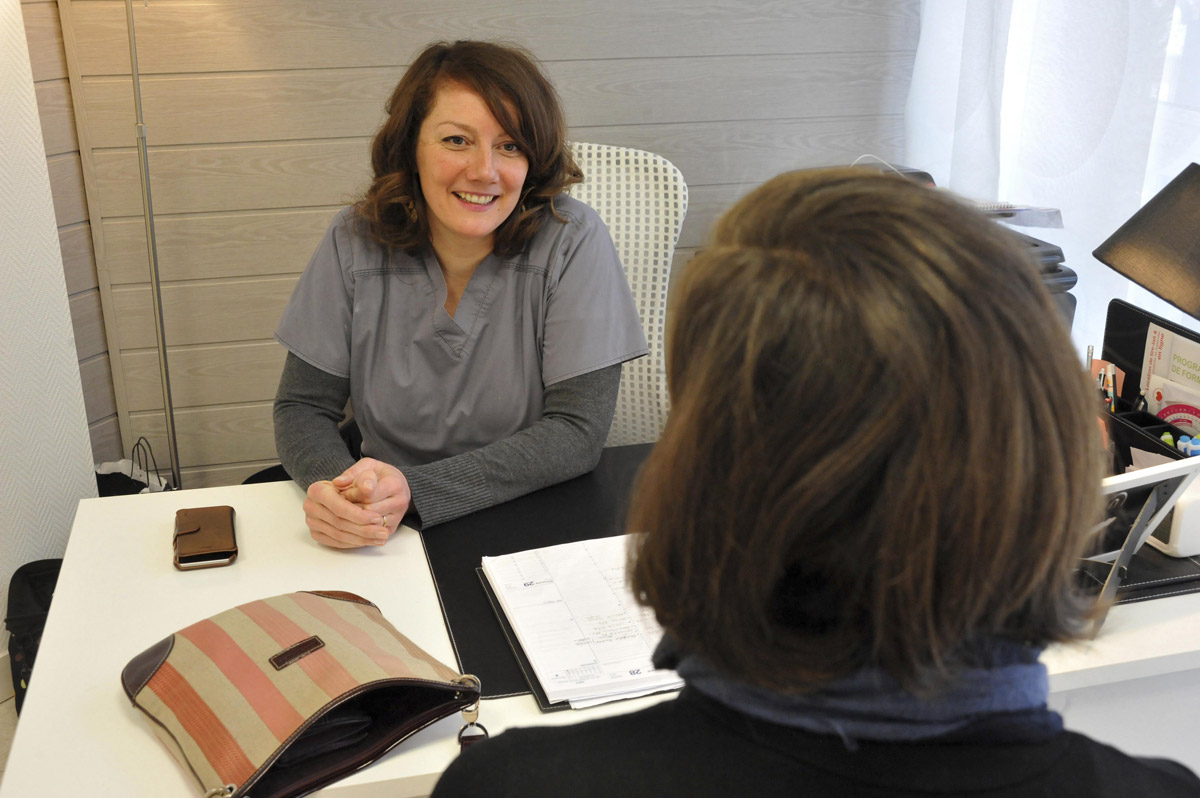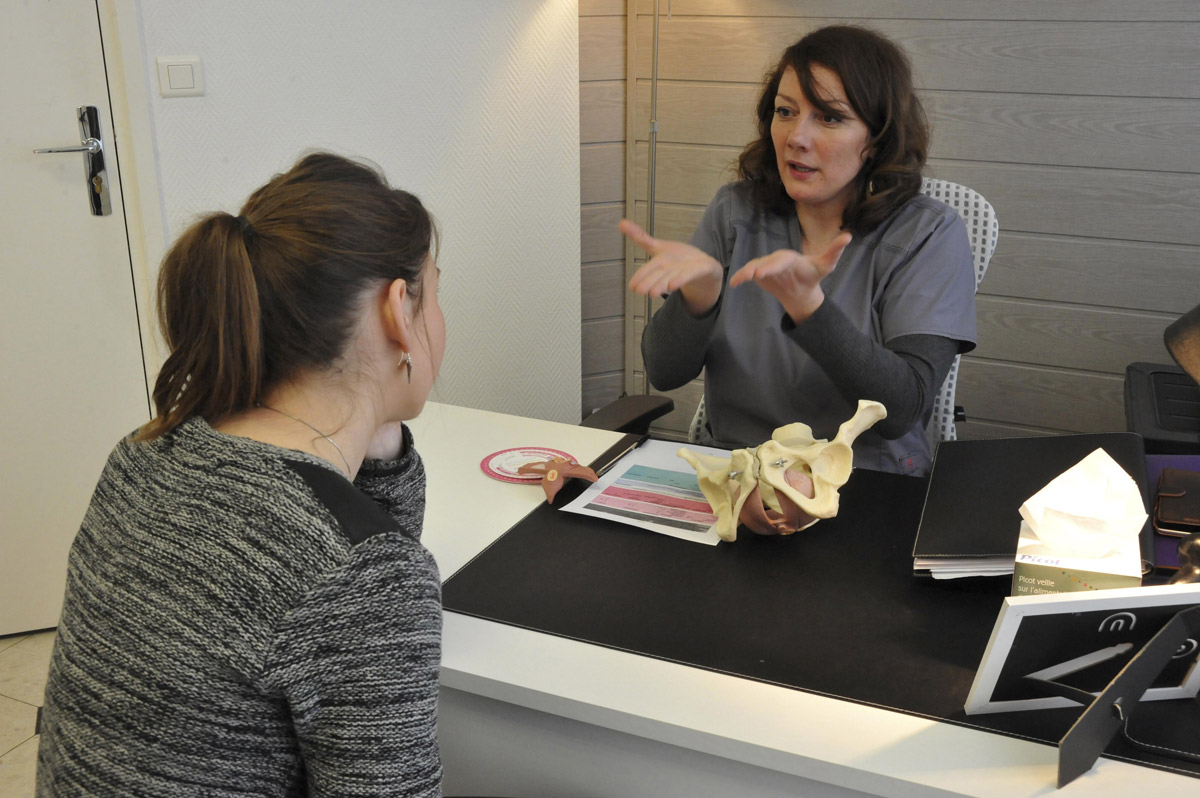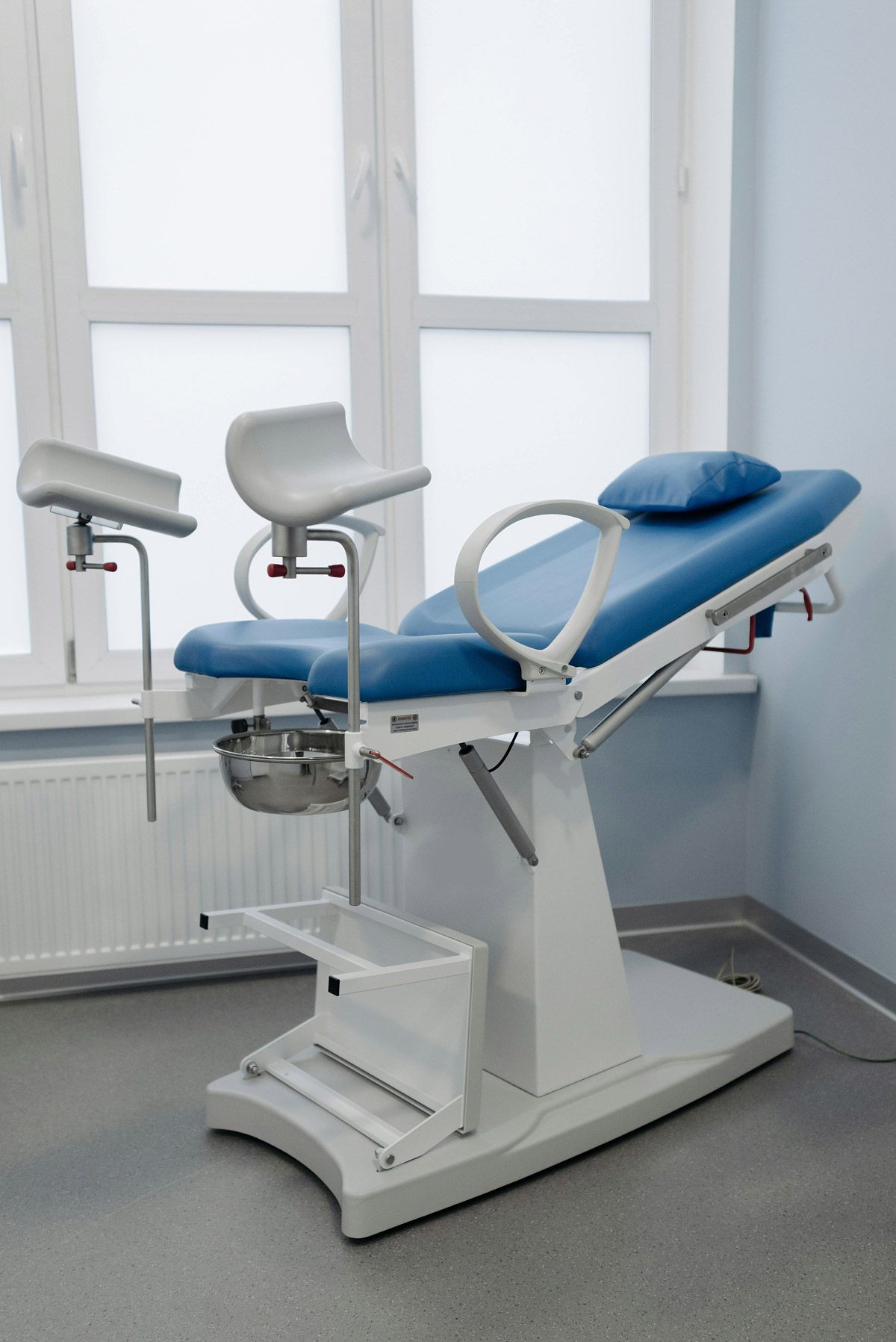
I was finishing high school when the first HPV vaccine became available. Even though I turn into an elephant shrieking at the sight of a mouse when faced with a needle, I always curl up my trunk and follow doctor’s orders. So I diligently did the three rounds of shots (at the time) in order to protect myself against the 200+ strains of the human papillomavirus that can lead to cervical and other cancers. Then I got my first pap smear at the recommended age of 21, and I learned that I would rather get 21 vaccines than cross paths with a speculum. Ever. Again. It was excruciating, embarrassing, and I spent most of my twenties thinking that I was extra sensitive about a standard procedure every woman goes through. Well, it’s taken decades (if not centuries, really), but women are demanding that our pain be taken seriously. And in that vein, good news: a self-administered pap smear test, that uses a swab instead of the dreaded speculum, could be available in the US starting this fall. Halle-f*cking-lujah.
A new self-administered test for HPV — the virus that causes most cases of cervical cancer — is rolling out to doctor’s offices, and may be available for at-home use in the future.
In the test, which The New York Times said is expected to be available this fall, a patient can swab the inside of their vagina themselves to collect a tissue sample while at their gynecologist’s office.
The swab, the outlet said, is similar to those used to nasally test for COVID 19.
The New York Times noted that the new procedure is as effective as the current standard, a pap smear, which is done by a gynecologist — and which many women struggle with, either physically or emotionally.
In a pap smear, a gynecologist uses a speculum to open the walls of the vagina, and then uses an instrument to collect cells from the cervix.
As the Mayo Clinic notes, it “may feel uncomfortable. You could experience light bleeding afterward, but you shouldn’t feel pain or cramping.”
However, that’s not the case for everyone: “I nearly passed out from the pain,” writer Emma Szewczak shared in Vogue UK.
And “when asked to rate the discomfort, distress or anxiety they might feel about having a pelvic examination on a 0-10 scale, somen with a history of sexual assault were nearly twice as likely to report high (22% vs. 11.4%) or moderate (22.4% vs. 13.7%) levels of distress, compared to women without a history of sexual assault,” one study, published in the National Library of Medicine, highlighted.
Until now, the pap smear was the only way to effectively test for HPV — and as the Mayo Clinic noted, “Most cervical cancers are caused by HPV.”
It’s “a common virus that’s passed through sexual contact,” and although for “most people, the virus never causes problems,” for some, “the virus can cause changes in the cells that may lead to cancer,” according to the organization.
It can also cause anal cancer, as Desperate Housewives alum Marcia Cross shared in an effort to raise awareness about the virus.
This could be a HUGE game changer in women’s health! Not only is it a swab instead of a speculum, the sample is also collected from the vagina instead of the cervix. AND it puts the testing in our own hands. As someone who’s avoided regular screenings due to the pain and distress (even though I knew I shouldn’t), this is such a relief. First we’re expecting this rollout in the fall, wherein the test would be self-administered while at a doctor’s office. But The New York Times is also reporting that the FDA is reviewing the option of at-home testing, where the samples get sent to a lab for results (this option is in practice in several countries already). Dr. George Papanicolaou did women a great service by developing the first pap smear test (in fact there’s a great American Experience documentary about it on PBS), but holy cow this is a much-needed upgrade! Not to be disrespectful or ungrateful to the original test — which reduced cervical cancer deaths in the 20th century by 70% — but as NYT also noted: “Despite being disliked by many women, the patient experience of having a Pap smear with a speculum and stirrups has remained largely unchanged since the 1940s…” It’s time.
photos credit: Pavel Danilyuk on Pexels, Pascal Bachelet / Avalon













Unfortunately, this is misleading. I’m a pathologist who reads Pap smears and processes specimens/does HPV testing. The Pap smear screens for dysplasia, the precursor to cervical cancer caused by HPV. HPV is crazy common and over 90% of infections will be cleared without leading to dysplasia within 2 years. Over-testing for HPV is leading to a ton of cervical biopsies that show normal results. Cervical biopsy is no picnic! I agree that we need a better solution, but at least recommendations have changed to getting a Pap smear every 3 years instead of every year.
Also- I’m not some weird pathology-related anti-HPV testing bot. I’ve been reading celebitchy for at least 15 years!
I’m in Sweden and self-administered HVP testing have been the standard in my region since 2021. It was first introduced as a temporary measure due to the pandemic, and based on the experiences it was made standard. If your self-administered test is positive, you will be called to an examination but I haven’t heard about any increase in biopsies. Self-testing has led to an increase in the participation ratio, though – in all age groups, and especially among those who had skipped 4 or more examinations previously. I have done 2 self-administered test myself, both were negative.
For the past year, these self-test kits have been available free of charge online in British Columbia. I was thrilled to be able to do this myself. While I’m very fortunate to have a family doctor, getting an appointment is usually a two-week wait or longer.
Board certified gynecologist here and agree to disagree. We perform many fewer colposcopies with HPV based testing than previously with annual cytology (pre 2009 guidelines). There were many false positives with cytology only as well. ASCUS all day long. (This was meant to be a reply to the pathologist above)
Thank you @Gyno for your response. I would always get false positives and have to come back for more testing. For me, it’s extremely painful (and humiliating) and lots of cramping and bleeding after. It got so bad, that I stopped going to the gyno (because not a single one of them took my pain and fear seriously). I haven’t been in 7 years. This is what will get me to begin testing again.
My first reaction to the title was “no, thanks”, but now that I know that it’s a vaginal test, I’m so excited. I’d still prefer a doctor to administer it because I’m so weird about doing anything medical to myself. But overall, great news if it gets more women to test!
There are so many amazing screenings you can do at home now and I hope this will open the door for you! Once you are of a certain age, you can do home stool tests instead of colonoscopies! This is the direction testing is going and it’s so much easier once you do it the first time and get over your squickiness about it.
These have been available for a couple of years in New Zealand. You can go to your GP’s office and have a nurse do it, or you can do it yourself at home or at the clinic. I used one earlier this year and it was sooooo much easier. No speculum, no lying around naked from the waist down, no pain. It’s a long overdue and wonderful change.
I’m still afraid of pap smears since a woman doctor in my 20s decided to stick her gloved finger up my anus at the end of the exam without consent. Apparently she was checking for rectal tone but that is not standard in the country where I live. This was compounded by then going to a teaching clinic after, where there would literally be four people in the room for every pap smear and I have a friable cervix so there was always a lot of bleeding after.
In my late 40s, last year I finally got to see an obgyn for the first time about abnormal bleeding. It turns out I had a 3 cm polyp and should have gone to the ER since I had been bleeding steadily and very heavily (xl tampon every hour on some days) for about a month. I couldn’t believe how easy a pelvic exam was from a trained professional and his team who made me feel so comfortable in the office.
So glad to see that there are innovations coming that result in better and more comfortable care in women’s health. TY to all the gynos and team members on the thread you make a difference and are champions for all women!
And huge TY CB for making space for these conversations and following new developments. ♥️
I was talking with people over the winter – one a doctor, but not an OB/gyn – and it seemed that the anus check is somewhat routine. i’ve been getting paps/pelvic exams since I was 15 and I have NEVER had that done to me. I’m sorry it was done without your consent.
Thank you @becks1 🙏 there were some other issues with that doctor and she ended up mysteriously exiting practice quickly without any handoff for her patients, meaning no doctor for me for about a decade. I wondered after if other patients had made complaints against her.
I’ve taken my own power back in the past couple of years learning about the patient centered medical home model and then advocating for myself to find a new FP who is amazing 😍, and supported by an equally amazing primary health care team. It’s been a journey though as I had so little trust and felt very scared.
Alleluia! It’s about time. I have complex medical trauma from when I was very young, which has made vaginal exams extremely difficult for me. I have gone years at a time without testing, even though I knew I should. Self swabbing would absolutely be a game changer.
I have done this myself. With such a doctor shortage in Canada- it’s great! Like a Covid test but for your vag! 10/10
Kudos to Celebitchy for making this information available. I read three newspapers a day-maybe that’s my problem-and I missed this.
I’m sixty and have crawled up in the stirrups for a Pap as required all those years and it never gets easier.
Yes! Many thanks to Celebitchy for this post — and for other similarly informative posts.
I would definitely do PAP smears more frequently if this were an option.
Canadian and this became available last year. Thank you for the reminder!
Ontario? Not in Nova Scotia, siiiiiighhhhhhhhhhhhhh we are always the LAST
My high school friend is a nurse and her health authority put out this video in February. Easy instructions on how it works. Also from British Columbia where this is readily available. https://www.facebook.com/share/p/cJCG1tGe3Tog4XXV/?mibextid=oFDknk
This is really great, but while we’re at it, can some female engineers design a mammogram machine that doesn’t feel like smashing your breasts in a vise? I mean it’s imaging right? Why does that have to hurt in this day and age?
Absolutely agree! Brings tears to my eyes and smashes the life out of them!
If we can send a man to the moon . . . I remember it well, the first exam, it was not bad. Planned Parenthood, 60s, the doctor, a woman in hippie dippy apparel was soft spoken, patient, gentle, answered my questions . . . That was the last fucking time. How I hate those dreaded words, “scoot down some more . . .”